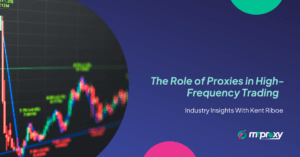The term ‘latency’ refers to data transmission speeds between systems. In the forex industry, the term ‘latency’ refers to data transmission speeds between a trader and the market. In everyday use, ‘low latency trading’ refers to fast data transmissions and fast trade order execution. Meanwhile ‘high latency trading’ refers to slow data transmissions and slow order execution.
Trading technology is so advanced now that the difference between low latency trading and high latency trading can be a matter of milliseconds. But to traders, every millisecond counts. This is because latency affects how quickly they are able to receive market data, how easily they are able to place orders, and how likely they are to get their target price. With low latency trading, traders are less likely to experience delayed order fills, and of course, slippage. And so low latency trading is what they rightly expect.
How Brokers Benefit From Offering Low Latency Trading
Low latency trading can have considerable benefits for forex brokers.. Low latency trading allows traders to make more accurate decisions, to feel more confident when executing trades, and to achieve better long-term results. As such, low latency trading allows brokers to offer traders a better service, to earn a better reputation in the industry, and to achieve better long-term business growth.
For forex brokers, low latency trading offers several benefits including:
1 – Increased Competitiveness
Low latency trading allows traders to perform better on the financial markets. This means that forex brokers are able to use their low latency trading as a selling point. As such, low latency trading enables forex brokers to compete more effectively, by offering traders more accurate pricing, and by ensuring better trade execution times. As such, low latency trading also creates new business opportunities for forex brokers and enables them to make more money by attracting new traders.
2 – Increased Profitability
Low latency trading allows traders to execute orders quickly and accurately. This means that they are able to take advantage of price movements and, hopefully, trade more profitably. As such, low latency trading creates better opportunities for traders and encourages them to be more active on the markets. As such, low latency trading also creates more business opportunities for forex brokers and enables them to make more money through increased service use.
3 – Increased Client Satisfaction
Low latency trading allows traders to get better fill rates. This means that they are able to plan their trades more effectively and, hopefully, trade more profitably. As such, low latency trading improves client satisfaction and brand loyalty. As such, low latency trading also helps create better client relationships for forex brokers and enables them to reduce the number of complaints and support tickets they receive..
What Can Brokers Do To Reduce Their Latency?
The first major cause of high latency is server location. For data to be transmitted, there needs to be both a data source and a data destination. The further the data has to be sent between these two points, the longer it will take for the data to arrive. To solve this problem, forex brokers can use MetaTrader datacenters. Ideally, forex brokers need to set the MetaTrader datacenters up close to their traders. This is so that they can send and receive data more quickly. By having MetaTrader datacenters in strategic locations, brokers can reduce the distance between data points. This is better for traders because they need fast data transmission to be able to trade profitably.
The second major cause of high latency is overloaded servers. Brokers need to provide traders with the most up-to-date market information at all times. Sending this data worldwide can take up a lot of server resources. To solve this problem, forex brokers can also use MetaTrader datacenters. By adding more datacenters to their network, brokers can store various data (like price data) closer to their clients. This helps prevent overloading the main servers and reduces excess latency. It also helps brokers offer traders a better service with more consistent price streaming.
How MT Proxy Can Help You Offer Low Latency Trading
Brokers often find that expanding their trading infrastructure can be expensive. It can also take up a lot of internal resources, especially when it comes to planning, building, and managing that infrastructure. That’s where MT Proxy comes in.
We have an extensive network of MetaTrader datacenters that are strategically located to ensure the lowest latency towards the major trading hubs worldwide. Brokers can use our services to expand and optimise their trading infrastructure in a way that is both easy and affordable. What’s more, brokers can also use our services to keep price data and other information closer to clients, thereby reducing any excess latency.
If you want to learn more about how our services can help you reduce latency, and attract new clients, reach out to us today or sign up for our free trial.



